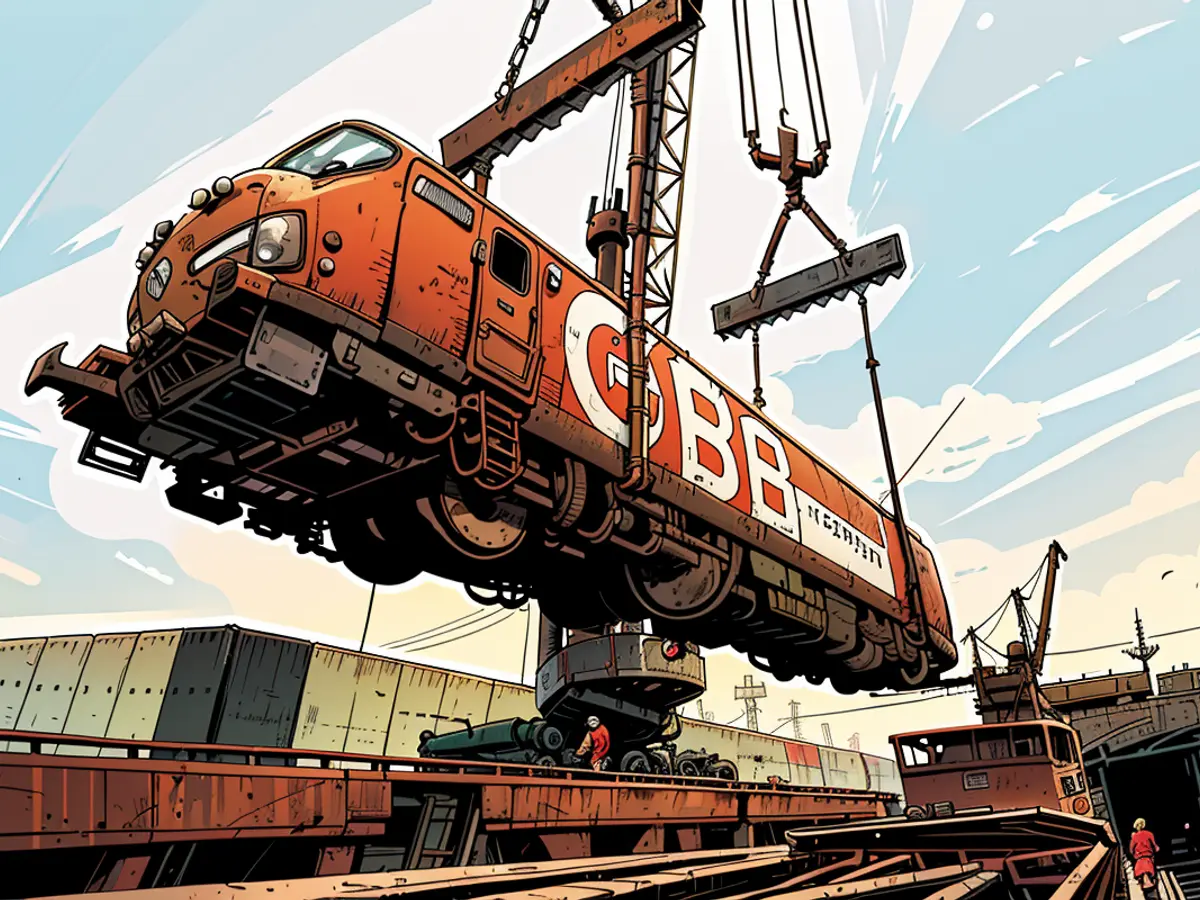Following the ship accident in Elsfleth - Repair work on the damaged Hunte Bridge is underway
Work on the damaged Hunte Bridge in Elsfleth, Wesermarsch district, is progressing. A floating crane has now removed the broken bridge section, as a spokesperson for the railway announced. It will be replaced by a new part from the bridge's stock at Deutsche Bahn. The replacement is scheduled for the coming week, as announced by the Lower Saxony Ministry of Economics.
On July 23, an inland ship collided with the railway bridge. The bridge house of the tank ship was almost completely destroyed, and the structure and overhead line were damaged. Initial investigations suggest that the ship's captain underestimated the clearance height, and he is being investigated for endangering rail and ship traffic.
Rail traffic over the bridge has been suspended since then. The closure has significant economic consequences for the region, as the harbors on the left bank of the Weser rely on this connection. Goods can no longer be transported by rail, and rail passengers must switch to alternative means of transport.
Crane lifts tonnage locomotives onto freighter
The sudden interruption of rail traffic in Wesermarsch is causing significant disruptions. Two locomotives stranded in the harbor of Brake have now been transported away by inland ship. A crane lifted the tonnage vehicles from the Niedersachsenkai onto a freighter that was to take the locomotives to Bremen.
"Due to the bridge closure, all locomotives and freight wagons are cut off from rail traffic here in Brake and Nordenham," said Dennis Ortwein, head of the harbor railway in Brake, to the German Press Agency. The loading is necessary because the railway company needs the locomotives back in operation.
The almost 100-ton locomotives were first maneuvered to the quayside and then lifted one by one by two harbor cranes. "The challenge here is simply the weight of the electric locomotives," said Ortwein. The vehicles must be secured with slings and restraints accordingly.
Second accident at the bridge within a few months
This was the second time this year that an inland ship collided with the bridge and damaged it. In the first accident in February, the structure was so severely damaged that a temporary bridge had to be built. In both cases, the ship's captain is said to have underestimated the clearance height.
The temporary bridge that was also damaged is now out of operation. After weeks of downtime, trains between Berne and Elsfleth could run again at the end of April, and the harbors in Nordenham and Brake were reachable by rail. The harbor in Oldenburg remained unreachable for seagoing ships because the height of the bridge is not sufficient for the passage of large ships, and there is no alternative route, unlike for the harbors in Brake and Nordenham.
Quick repair planned
The rail traffic over the bridge has been stopped again for more than two weeks, but this time the repair is expected to go faster. The repair is scheduled to be completed by August 25. "In less than three weeks, trains to and from Brake and Nordenham will be able to run over the new bridge again. Also, the rail passenger traffic will be fully operational here," announced Lower Saxony's Minister of Transport, Olaf Lies (SPD).
The Minister of Transport is in close exchange with representatives of the economy, the affected municipalities, the port industry in Brake, Nordenham and Oldenburg, the German Railways, the Federal Water and Shipping Administration, and the state authority for road construction and traffic and NPorts. To prevent further incidents on the bridge, a working group is to be set up to develop safety measures for the bridge area.
Plans and preparations for the new bridge
Meanwhile, plans for the new regular bridge, which is to go into operation by 2028 at the latest, are underway. According to the railway company, in coordination with the state, federal government and the waterways and shipping authority, the documents for the tender are being prepared and the key points of financing are being clarified.
According to the railway company, the clearance of the new bridge will be 1.93 meters higher than that of the original bridge. Furthermore, the opening for shipping will be widened to around 40 meters. "A shared goal is also to plan and build a cycle and footpath," the railway spokesperson said. The new route will run slightly offset from the current railway line, allowing trains to continue operating over the provisional bridge during the works.
The shipping company responsible for the inland ship involved in the collision is currently evaluating their procedures to prevent such incidents in the future. Due to the bridge closure, shipments that were previously transported by rail are now being shipped via alternative waterways for shipping, requiring adjustments to the shipping schedule.








